AI-Powered Building Design and Optimisation
AI-Powered Architectural Design
Have you heard about Artificial Intelligence (AI)? It’s showing up everywhere, even in how buildings are made! Architects are using AI tools to help design buildings and structures in a cool new way. Sometimes, this is called “generative design” because AI helps create lots of design ideas.
AI helps architects find creative ideas faster and make better choices as it can create many design options or analyse tons of data in seconds1Sajjad Naseri, “AI in Architecture and Urban Design and Planning: Case studies on three AI applications”, GSC Advanced Research and Reviews, 2024, https://gsconlinepress.com/journals/gscarr/sites/default/files/GSCARR-2024-0463.pdf. It also takes care of boring, repetitive tasks such as data processing and analysis so architects can focus on being creative and designing innovative buildings and solutions.
 FIG. 1. The results of the use of AI tools demonstrated by Zaha Hadid Architects, a studio which is exploring the use of AI in architecture and currently is developing most of its projects using AI-generated images2Jonathan Bell, “AI in architecture: Zaha Hadid Architects on its pioneering use and collaborating with NVIDIA”, Wallpaper, 2024, https://www.wallpaper.com/architecture/zaha-hadid-architects-nvidia-ai-in-architecture
FIG. 1. The results of the use of AI tools demonstrated by Zaha Hadid Architects, a studio which is exploring the use of AI in architecture and currently is developing most of its projects using AI-generated images2Jonathan Bell, “AI in architecture: Zaha Hadid Architects on its pioneering use and collaborating with NVIDIA”, Wallpaper, 2024, https://www.wallpaper.com/architecture/zaha-hadid-architects-nvidia-ai-in-architecture
AI-powered architectural design also opens new possibilities for creating sustainable buildings, as it can be used at the conceptual stage for space and thermal optimisation, i.e., “optimise the building’s orientation, window sizes, and shading, maximising natural light and ventilation”3Camilla Ghisleni, “Artificial Intelligence as an Ally in Architectural Decarbonization: From Conception to Building Implementation”, ArchDaily, 2024, https://www.archdaily.com/1011723/artificial-intelligence-as-an-ally-in-architectural-decarbonization-from-conception-to-building-implementation. During the design phase, architects can also employ AI to take into account elements such as materials to be used and their durability or recycling potential4Peter Gailhofer et al., “AI solutions in the energy sector, in particular in the buildings sector”, in: “The role of Artificial Intelligence in the European Green Deal, Study for the special committee on Artificial Intelligence in a Digital Age (AIDA)”, Policy Department for Economic, Scientific and Quality of Life Policies, European Parliament, Luxembourg, 2021. https://www.europarl.europa.eu/RegData/etudes/STUD/2021/662906/IPOL_STU(2021)662906_EN.pdf.
Integrating AI into architecture directly supports the goals of smart cities and advances global commitments like the Agenda 2030 and the Paris Agreement. If we look at the Paris Climate Agreement, it becomes clear that building optimisation is critical to achieving global climate targets and limiting global warming to 1.5°C, as residential and non-residential buildings account for nearly 30% of global carbon emissions5Feyisayo Ajayi, et al., “AI-driven decarbonization of buildings: Leveraging predictive analytics and automation for sustainable energy management”, World Journal of Advanced Research and Reviews, 2024, 24(01) https://wjarr.com/sites/default/files/WJARR-2024-2997.pdf. AI-powered tools can help design decarbonised buildings, reducing the embodied energy consumed during construction, and help design buildings that meet net-zero objectives. With its unique potential to analyse, adapt, and automate energy decisions, AI is seen as a key contributor to achieving net-zero targets by 2050, ensuring that buildings remove as much CO₂ as they emit, thereby playing a pivotal role in creating climate-neutral, future-ready cities6European Union Agency for the Cooperation of Energy Regulators, “European Green Deal Glossary,” no date, https://acer.europa.eu/sites/default/files/documents/en/The_agency/Documents/Glossary.pdf.
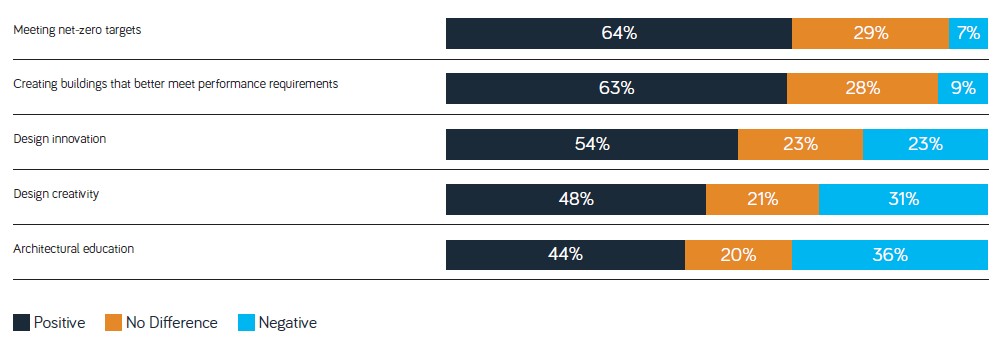 FIG. 2: How architects answer the question Do you think the effects of AI will be positive or negative in…? RIBA AI Report 20247Royal Institute of British Architects, “RIBA AI Report,” Architecture.com, 2024, https://eprints.lancs.ac.uk/id/eprint/216695/5/RIBA_2024_AI_Report.pdf
FIG. 2: How architects answer the question Do you think the effects of AI will be positive or negative in…? RIBA AI Report 20247Royal Institute of British Architects, “RIBA AI Report,” Architecture.com, 2024, https://eprints.lancs.ac.uk/id/eprint/216695/5/RIBA_2024_AI_Report.pdf
Data, images and words
Using AI in building design often involves working with three key elements: data, images and text prompts:
- Data: Designing buildings requires processing and analysing a lot of data. Energy consumption data, for example, can be optimised for climatic conditions and potential savings. AI allows for rapid data processing, enabling architects to incorporate valuable insights into the design phase.
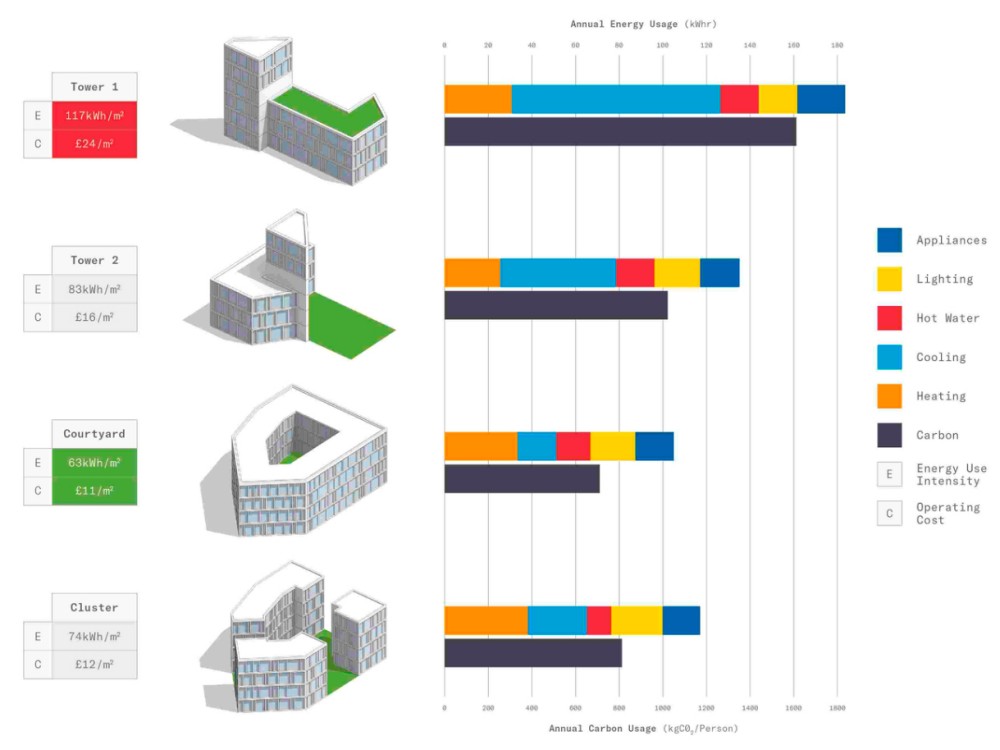 FIG. 3: Example of data related to energy usage in different parts of the building8Camilla Ghisleni, 2024.
FIG. 3: Example of data related to energy usage in different parts of the building8Camilla Ghisleni, 2024.
- Images and patterns: Achieving the desired aesthetic effect sometimes requires the modification of images or patterns. AI facilitates the creation of multiple design variations, enabling the efficient identification of an optimal solution. Typically, AI tools will generate and propose several possible solutions, which are then refined through human intervention. A notable example of this process is the application of AI in MVRDV Studio Valley’s façade design:
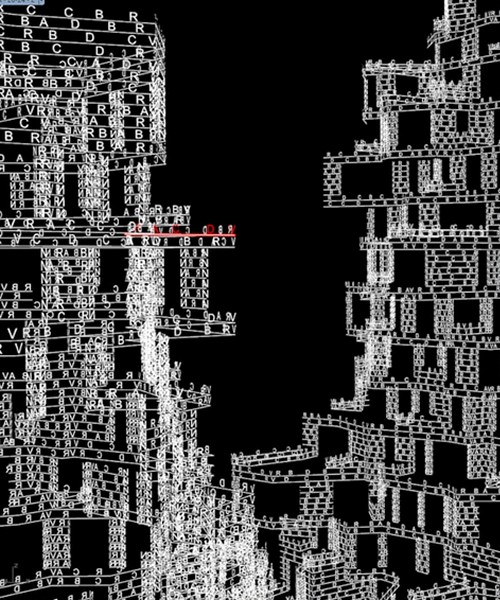

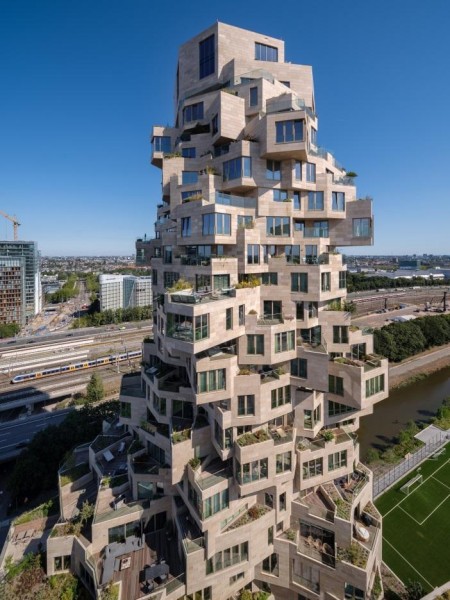
FIG. 4: Valley’s models and photo (Ossip van Duivenbode)9MVRDV Studio, “Valley Project,” no date, https://www.mvrdv.com/projects/1125/scripting-valley and https://www.mvrdv.com/projects/233/valley
- Prompts: Architectural AI tools enable the use of descriptive language to generate visualisations. These descriptions, known as prompts, are used to specify the desired output and initiate the creative process. Consider this example provided by Architizer:”PROMPT: Imagine a highly detailed, intriguing visualisation of an underground residence carved into the rocky cliffs of a remote island, taking inspiration from ancient cave dwellings. Highlight the interplay between the natural rock formations and the modern architectural elements. Set your professional camera to aperture priority mode, f/8, ISO 200, and use a macro lens to capture the textures of the rock surfaces. –v 5.1″10Architzer Editors, “AI Architecture: 15 Breathtaking Modern Residences (Prompts Included)”, Architizer, no date, https://architizer.com/blog/inspiration/collections/ai-architecture-15-breathtaking-modern-residences-prompts-included/
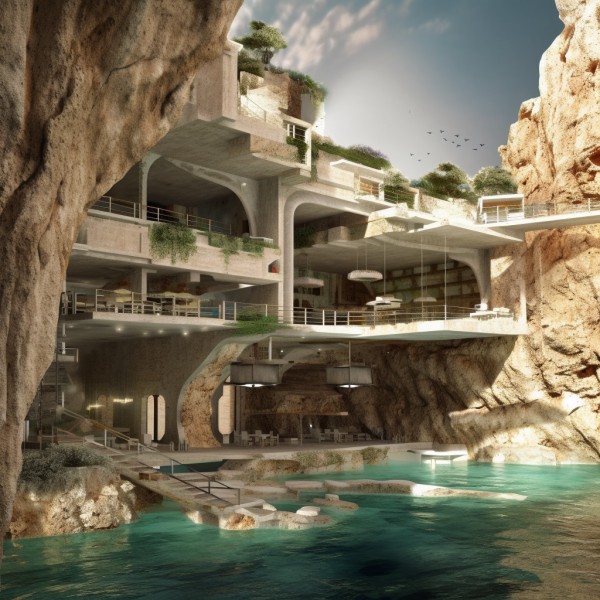 FIG. 5: Prompt result, Contemporary Cave Dwelling (Architizer)11Architizer Editors, no date.
FIG. 5: Prompt result, Contemporary Cave Dwelling (Architizer)11Architizer Editors, no date.
Watch this video to learn more about Tim Fu, a leading London architect, and how he uses AI to create visualisations:
AI is transforming architecture, offering support across various design phases. By using data, images and prompts, and a combination of these, AI assists architects in the following key areas:
- Generative Design and Concept Exploration
AI tools can generate multiple design iterations based on initial parameters like site constraints, materials, usage, and sustainability goals. As demonstrated in the previously mentioned video, Tim Fu utilised AI image generation to create conceptual visualisations that merge historical, futuristic, and organic elements, thereby expanding aesthetic possibilities and accelerating the ideation process.
- Structural and Performance Optimisation
AI simulates and optimises structures for energy efficiency, structural stability, and material use, supporting sustainable design.
- Site Analysis and Urban Planning
AI analyses environmental conditions, zoning regulations, sunlight exposure, water flow paths, and pedestrian flow to determine optimal site selection and inform urban planning decisions, employing geospatial AI to map efficient spatial arrangements.
- Automating Repetitive Tasks
AI automates routine drafting, code compliance checks, and scheduling, freeing architects to focus on creative and strategic aspects of their work.
- Visualisation and Client Communication
AI and VR tools quickly create realistic 3D visualisations, enhancing client interaction and improving comprehension of the design concepts.
In essence, AI acts as a “creative co-pilot,” enhancing the architect’s toolkit through collaboration between human creativity and computational intelligence.
How does AI contribute to designing buildings for Smart Cities
But why is AI important when it comes to Smart Cities and building design? Let’s look at some advantages of using AI-powered design tools:
- Energy efficiency optimisation. It is possible to use AI to predict energy demands and reduce energy consumption by optimising different aspects of infrastructure, such as air conditioning, heating, ventilation, solar panels usage or waste management12Sajjad Naseri, 2024.. We can use AI to analyse and, afterwards, predict energy demand patterns and usage peak periods in order to coordinate this data with information about weather conditions or other external factors13Feyisayo Ajayi, 2024..
- Environmental sustainability. AI facilitates the analysis of extensive environmental data to inform sustainable and climate-adaptable design14Tosin Daniel Iluyomade and Azubuike Chukwudi Okwandu, “Smart buildings and sustainable design: Leveraging AI for energy optimization in the built environment”, International Journal of Science and Research Archive, 2024, 12(01), 2448–2456 https://ijsra.net/sites/default/files/IJSRA-2024-1049.pdf.
- Space Utilisation. Particularly in adherence to environmental laws, AI analyses data to optimise space layouts, offering numerous solutions. AI can also create and manipulate 3D models that dynamically adjust to both designer changes and new data, which would be difficult for humans to analyse within a reasonable timeframe15Aniekan Akpan Umoh et al., “A Review of Smart Green Building Technologies: Investigating the Integration and Impact of AI and IoT in Sustainable Building Designs”, Computer Science & IT Research Journal, January 2024, https://www.researchgate.net/publication/377423726_A_REVIEW_OF_SMART_GREEN_BUILDING_TECHNOLOGIES_INVESTIGATING_THE_INTEGRATION_AND_IMPACT_OF_AI_AND_IOT_IN_SUSTAINABLE_BUILDING_DESIGNS/fulltext/65a679215582153a682adf62/A-REVIEW-OF-SMART-GREEN-BUILDING-TECHNOLOGIES-INVESTIGATING-THE-INTEGRATION-AND-IMPACT-OF-AI-AND-IOT-IN-SUSTAINABLE-BUILDING-DESIGNS.pdf.
 FIG. 6. Image generated by Zaha Hadid Architects using text-to-image generator: a design which uses an intriguing space layout16Nat Barker, “ZHA developing “most” projects using AI-generated images says Patrik Schumacher”, Dezeen, 2023, https://www.dezeen.com/2023/04/26/zaha-hadid-architects-patrik-schumacher-ai-dalle-midjourney/
FIG. 6. Image generated by Zaha Hadid Architects using text-to-image generator: a design which uses an intriguing space layout16Nat Barker, “ZHA developing “most” projects using AI-generated images says Patrik Schumacher”, Dezeen, 2023, https://www.dezeen.com/2023/04/26/zaha-hadid-architects-patrik-schumacher-ai-dalle-midjourney/
- Integration of sustainable materials. AI-powered tools enable the analysis of future building performance to determine the most energy-efficient and suitable materials17Abdulsalam Shema and Halima Abdulmalik,, “Artificial intelligence (AI) in architecture and design”, in: Husain, Husam R. (Ed.), AI-driven architecture: Pioneering the digital frontier, Alanya University, https://doi.org/10.38027/AI-Driven-7.
- Adaptive architectural solutions. TAI allows for the design of buildings that adapt to changing needs. An example includes the Diffusive Habitats’ reconfiguration system, recognised by the Association for Computer Aided Design in Architecture in 2023 and jury winner of the Architizer A+ Awards 2024 (category +AI), which makes use of AI-assisted design. It “enables users to access an online platform and, in collaboration with bespoke AI-enhanced algorithms, collectively situate, design, and kick-start a new habitat”18Architizer, “Projects – Diffusive Habits”, no date, https://architizer.com/projects/diffusive-habitats/.
 FIG. 7. Diffusive Habitats’ reconfiguration system19Architizer, no date.
FIG. 7. Diffusive Habitats’ reconfiguration system19Architizer, no date.
Challenges
While AI-powered tools offer significant benefits, it’s essential to recognise potential challenges and limitations:
- When analysing large datasets to build models and make predictions, for example, about energy demands, the accuracy of the predictions depends on the quality of available data. Incorrect data will lead to flawed predictions.
- AI-powered tools are evolving rapidly, requiring users to constantly learn new features. Furthermore, new AI software remains experimental and somewhat unpredictable, often involving a trial-and-error phase during
- The economic factor is also important: AI tools are not cheap, which for smaller architectural studios can be a major problem.
- And let’s not forget ethical issues, such as those related to potential job losses or copyright issues for visualisations generated using AI tools. These remain to be, hopefully, resolved.
- Generating AI outputs is energy-intensive and thus raises environmental impact concerns. For example, creating a single AI image can consume as much electricity as charging a smartphone. When thousands of images are generated for architectural modelling, this results in a significant carbon footprint, undermining sustainability goals20Melissa Heikkilä, “Making an Image with Generative AI Uses as Much Energy as Charging Your Phone.” MIT Technology Review. December 1, 2023, https://www.technologyreview.com/2023/12/01/1084189/making-an-image-with-generative-ai-uses-as-much-energy-as-charging-your-phone/.
Real World Examples
To understand AI-powered optimisation, watch the video on Project Phoenix Modular Housing (Autodesk). It demonstrates how AI generative design optimises wind, sunlight, and other factors to help architects achieve sustainability and carbon neutrality:
If you want to see how AI-powered design can result in creating a sustainable building, read about The Canyon designed by MVRDV, a studio known for its use of AI-powered generative design, where modern heating and water recycling systems were implemented: https://www.mvrdv.com/projects/423/the-canyon
 FIG. 8. The Canyon (photo: Jason o’Rear)21MVRDV Studio, no date.
FIG. 8. The Canyon (photo: Jason o’Rear)21MVRDV Studio, no date.
Explore
Learn more about AI-powered building design:
- Check out how a professional architect uses prompts and images to generate unique design outcomes:
https://www.youtube.com/watch?v=zhKb9l6LBSo - Watch this video to learn more about how an architecture studio uses AI to work on its projects:
https://www.youtube.com/watch?v=dvKAyTRptkw
Bibliography
- Ajayi, Feyisayo, Osho Moses Ademola, Kafilat Funmilola Amuda, and Bolape Alade, “AI-driven decarbonization of buildings: Leveraging predictive analytics and automation for sustainable energy management”, World Journal of Advanced Research and Reviews, 2024, https://wjarr.com/sites/default/files/WJARR-2024-2997.pdf
- Architizer, “Projects – Diffusive Habits”, no date, https://architizer.com/projects/diffusive-habitats/
- Architzer Editors, “AI Architecture: 15 Breathtaking Modern Residences (Prompts Included) “, Architizer, no date, https://architizer.com/blog/inspiration/collections/ai-architecture-15-breathtaking-modern-residences-prompts-included/
- Barker, Nat, “ZHA developing “most” projects using AI-generated images says Patrik Schumacher”, Dezeen, 2023, https://www.dezeen.com/2023/04/26/zaha-hadid-architects-patrik-schumacher-ai-dalle-midjourney/
- Bell, Jonathan, “AI in architecture: Zaha Hadid Architects on its pioneering use and collaborating with NVIDIA”, Wallpaper, 2024, https://www.wallpaper.com/architecture/zaha-hadid-architects-nvidia-ai-in-architecture
- European Union Agency for the Cooperation of Energy Regulators, “European Green Deal Glossary,” no date, https://acer.europa.eu/sites/default/files/documents/en/The_agency/Documents/Glossary.pdf
- Gailhofer, Peter, Anke Herold, Jan Peter Schemmel, Cara-Sophie Scherf, Cristina Urrutia, Andreas R. Köhler and Sibylle Braungardt, “AI solutions in the energy sector, in particular in the buildings sector”, in: “The role of Artificial Intelligence in the European Green Deal, Study for the special committee on Artificial Intelligence in a Digital Age (AIDA)”, Policy Department for Economic, Scientific and Quality of Life Policies, European Parliament, Luxembourg, 2021, https://www.europarl.europa.eu/RegData/etudes/STUD/2021/662906/IPOL_STU(2021)662906_EN.pdf
- Ghisleni, Camilla. “Artificial Intelligence as an Ally in Architectural Decarbonization: From Conception to Building Implementation”, ArchDaily, 2024, https://www.archdaily.com/1011723/artificial-intelligence-as-an-ally-in-architectural-decarbonization-from-conception-to-building-implementation
- Heikkilä, Melissa. “Making an Image with Generative AI Uses as Much Energy as Charging Your Phone.” MIT Technology Review. December 1, 2023. https://www.technologyreview.com/2023/12/01/1084189/making-an-image-with-generative-ai-uses-as-much-energy-as-charging-your-phone/
- Iluyomade, Tosin Daniel, and Azubuike Chukwudi Okwandu, “Smart buildings and sustainable design: Leveraging AI for energy optimization in the built environment,” International Journal of Science and Research Archive, 2024, 12(01), 2448–2456, https://ijsra.net/sites/default/files/IJSRA-2024-1049.pdf
- MVRDV Studio, “Valley Project,” no date, https://www.mvrdv.com/projects/1125/scripting-valley and https://www.mvrdv.com/projects/233/valley
- Naseri, Sajjad, “AI in Architecture and Urban Design and Planning: Case studies on three AI applications”, GSC Advanced Research and Reviews, 2024, https://gsconlinepress.com/journals/gscarr/sites/default/files/GSCARR-2024-0463.pdf
- Royal Institute of British Architects, “RIBA AI Report,” Architecture.com, 2024, https://eprints.lancs.ac.uk/id/eprint/216695/5/RIBA_2024_AI_Report.pdf
- Shema, Abdulsalam, and Halima Abdulmalik, “Artificial intelligence (AI) in architecture and design”, in: Husain, Hasam R. (Ed.), AI-driven architecture: Pioneering the digital frontier, Alanya University, https://doi.org/10.38027/AI-Driven-7
- Umoh, Aniekan Akpan, Chinedu Nnamdi Nwasike, Olawe Alaba Tula, Oladipo Olugbenga Adekoya, and Joachim Osheyor Gidiagba, “A Review of Smart Green Building Technologies: Investigating the Integration and Impact of AI and IoT in Sustainable Building Designs”, Computer Science & IT Research Journal, January 2024, https://www.researchgate.net/publication/377423726_A_REVIEW_OF_SMART_GREEN_BUILDING_TECHNOLOGIES_INVESTIGATING_THE_INTEGRATION_AND_IMPACT_OF_AI_AND_IOT_IN_SUSTAINABLE_BUILDING_DESIGNS/fulltext/65a679215582153a682adf62/A-REVIEW-OF-SMART-GREEN-BUILDING-TECHNOLOGIES-INVESTIGATING-THE-INTEGRATION-AND-IMPACT-OF-AI-AND-IOT-IN-SUSTAINABLE-BUILDING-DESIGNS.pdf
These articles have been reviewed using AI in order to align the style and length of each article. The research and content are original to the authors noted.

